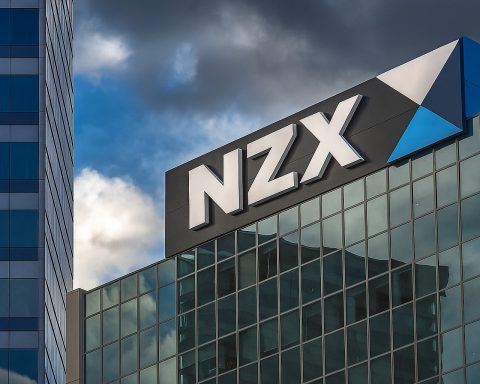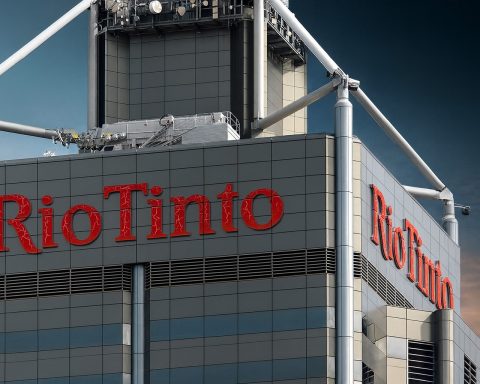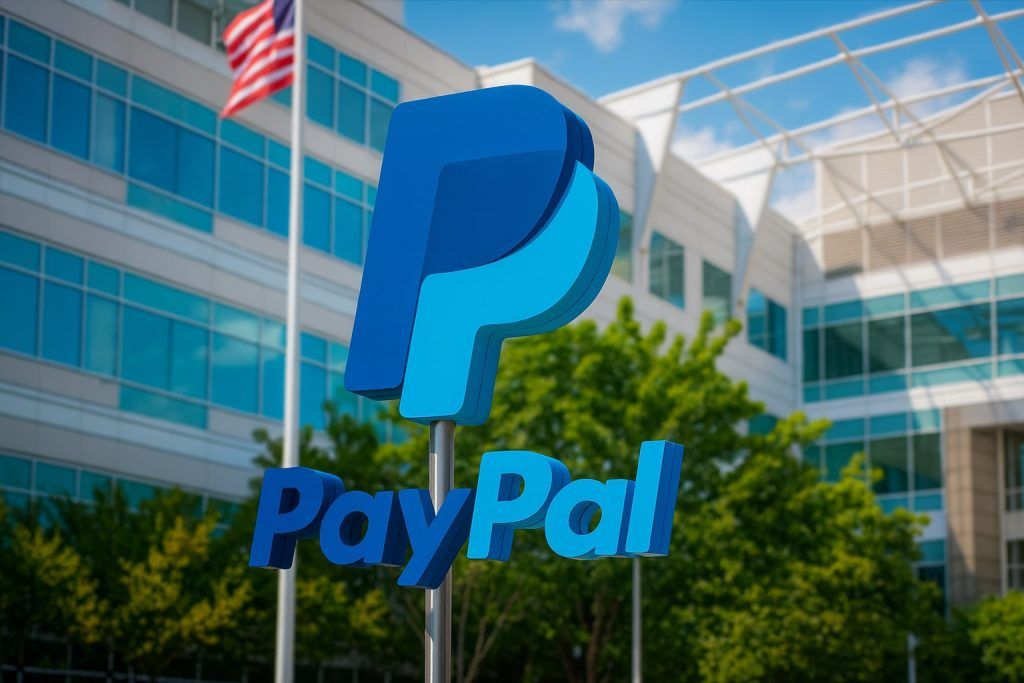Netflix (NASDAQ: NFLX) heads into Monday’s U.S. stock‑market open with a cheaper-looking share price, a freshly executed 10‑for‑1 stock split, and a swirl of headlines about earnings, ads, games, sports – and even a potential mega‑deal with Warner Bros. Discovery.
Below is a clear rundown of what matters for Netflix stock before trading begins on Monday, November 17, 2025.
Key points at a glance
- 10‑for‑1 stock split kicks in at Monday’s open. Shareholders of record on November 10 received nine extra shares for each one they owned after Friday’s close; trading begins on a split‑adjusted basis today. [1]
- Pre‑split price above $1,100. Netflix last traded around $1,112 per share on Friday, after a volatile few weeks following Q3 results and the split announcement. [2]
- Fundamentals remain solid but not flawless. Q3 2025 revenue grew about 17% to $11.5 billion, but profit missed expectations due to a one‑off $619 million Brazilian tax expense. [3]
- Ads, games, live sports and podcasts are now central to the story, with Netflix’s ad‑supported tier reaching ~94 million monthly active users and becoming one of the key growth engines. [4]
- Risks are rising alongside the stock price. Netflix trades at a rich multiple versus its history, faces a new shareholder‑rights investigation, and is caught up in speculation – and political pushback – around a possible bid for Warner Bros. Discovery. [5]
Where Netflix stock stands after a huge 2025 run
Netflix has been one of 2025’s standout large‑cap winners. Heading into the split:
- The stock closed around $1,112.17 on Friday, after trading as high as $1,156 intraday.
- Over the past year, shares have climbed roughly 40–45%, helped by strong subscriber monetization, a booming ad business and optimism around new growth pillars. [6]
Analysts at Trefis note that Netflix recently changed hands at around 45× 2025 earnings and ~34× 2026 earnings – well above its mid‑2022 multiple near 20× – and warn that such a premium leaves “considerable downside risk” if growth slows. [7]
In other words, Netflix is heading into the split from a position of strength and high expectations.
How Netflix’s 10‑for‑1 stock split works
Here’s what the split actually does – and doesn’t – change:
- Record date: Investors who owned Netflix shares at the close on Monday, November 10, 2025 are entitled to the split.
- Distribution date: After the close on Friday, November 14, each eligible shareholder received nine additional shares for every one share they held. [8]
- First split‑adjusted trading day: Netflix stock starts trading on a split‑adjusted basis at today’s open – Monday, November 17, 2025. [9]
What that means for your shares
A stock split is purely a cosmetic change:
- If you owned 10 shares at about $1,112 each on Friday (roughly $11,120 in total), after the 10‑for‑1 split you’ll own 100 shares.
- All else equal, the market would value each new share at about $111.22 (one‑tenth the price), so your overall stake is still worth roughly the same amount before any new price moves.
Your percentage ownership, voting power, and Netflix’s overall market value are unchanged by the split itself. What does change:
- The stock looks cheaper on a per‑share basis, which can attract more retail traders and make employee stock options easier to grant and exercise – a key reason the board cited for the move. [10]
- Options contracts and any open orders are adjusted automatically by your broker, but Monday’s first minutes of trading can still be choppy as liquidity re‑aligns.
What Q3 2025 told investors about Netflix’s business
Netflix’s Q3 2025 report, released on October 21, is the backdrop for today’s trading.
Headline numbers
According to Netflix’s shareholder letter and multiple news outlets:
- Revenue: ~$11.5 billion, up 17% year over year, in line with Wall Street forecasts. [11]
- Net income:$2.5 billion, or $5.87 per share, up about 8% from a year earlier but well below analyst expectations near $6.96 per share. [12]
- Operating margin:28%, versus 30% a year earlier and below the company’s 31.5% guidance – almost entirely due to a roughly $619 million tax charge tied to an ongoing dispute with Brazilian authorities. [13]
Without that one‑off tax hit, Netflix says its operating margin would have exceeded guidance. [14]
The market reaction was chilly: shares fell about 5–10% in after‑hours trading after the report, reflecting disappointment over the optics of an “earnings miss” on an otherwise strong quarter. [15]
Outlook
Despite the tax surprise, Netflix guided for:
- Q4 2025 revenue of about $11.96 billion, slightly ahead of Wall Street consensus. [16]
- Diluted EPS around $5.45, roughly matching expectations. [17]
- Full‑year 2025 free cash flow of roughly $9 billion, raised from a prior $8–8.5 billion estimate, thanks in part to lower‑than‑planned content spending and strong profitability. [18]
Netflix also repurchased about $1.9 billion of its own stock in Q3 and still has more than $10 billion left on its buyback authorization – an important support for per‑share earnings, especially post‑split. [19]
Ads have become a second growth engine
For Netflix stock, the most important shift over the last two years is how the company grows.
Explosive growth in the ad‑supported tier
- At its 2025 upfront presentation, Netflix said its ad‑supported plan reached about 94 million monthly active users (MAUs) worldwide – up from around 40 million in May 2024 and 70 million in late 2024. [20]
- Newer data show that roughly 45% of U.S. Netflix households now watch on the ad tier, up from 34% a year earlier. [21]
- Ad‑tier viewers are highly engaged, averaging about 41 hours per month of viewing, according to Netflix and Comscore. [22]
Netflix has rolled out its own Netflix Ads Suite ad‑tech platform across all 12 ad markets and is now integrating Amazon’s demand‑side platform (DSP) and other partners – moves the company says should help it more than double ad revenue in 2025, after already doubling it in 2024. [23]
For investors, this matters because advertising is:
- Higher margin than basic subscription revenue.
- Less dependent on raw subscriber growth, which Netflix itself says will be de‑emphasized now that it no longer reports quarterly subscriber numbers. [24]
Gaming and interactivity: from experiment to strategy
Over the last week, Netflix has highlighted just how serious it is about being more than a passive video platform.
A detailed Los Angeles Times report describes how Netflix’s games division, led by President of Games Alain Tascan, is rolling out: [25]
- A weekday interactive show called “Best Guess Live”, where viewers use their phones to play along for cash prizes.
- A slate of TV party games – including Boggle Party, Pictionary: Game Night, LEGO Party! and Tetris Time Warp – playable on the TV using a smartphone as a controller.
- A more focused games catalog: Netflix has released 142 titles so far, with 78 still active, and has shifted to fewer but higher‑impact releases. Downloads of Netflix games rose about 17% to 74.8 million from January to October 2025 versus the same period in 2024.
Co‑CEO Greg Peters recently graded Netflix’s gaming push a “B‑”, but management and analysts see room for improvement as TV‑based party games and franchise tie‑ins (such as Squid Game titles) deepen engagement. [26]
For the stock, gaming is still a small revenue contributor, but it supports Netflix’s broader pitch that it can keep members inside its ecosystem – and justify higher prices – without relying solely on scripted series.
Live sports and podcasts: building a broader entertainment hub
NFL, MLB and potentially Champions League
Netflix’s early moves into live sports are already moving the needle:
- The streamer’s 2024 NFL Christmas Day doubleheader generated over 30 million average viewers per game and helped create the highest‑streamed U.S. TV day on record, according to Nielsen and multiple reports. [27]
- Netflix will again stream a Christmas Day 2025 doubleheader (Cowboys–Commanders and Lions–Vikings), available in multiple languages and produced in partnership with CBS Sports and NFL Media. [28]
- Industry reports say Netflix is close to a deal to carry MLB’s Home Run Derby beginning in 2026 and is exploring bids for select UEFA Champions League rights, while also holding global deals with WWE and FIFA‑related events. [29]
While these deals are expensive and margin‑dilutive in the short term, they could turn Netflix into a must‑have service for sports fans – expanding its ad inventory and differentiating it from pure‑play studios.
Big push into video podcasts
A recent Business Insider report says Netflix is preparing a major video‑podcast initiative, aiming to launch 50–75 shows by early 2026 and potentially ramping to 200, across genres from sports to true crime. The company is licensing existing shows and commissioning originals, sometimes in partnership with Spotify and other networks. [30]
For investors, that underscores a key theme: Netflix wants to be a multi‑format entertainment platform competing not just with Disney+ and Max, but also YouTube, Spotify and TikTok for time and advertising dollars.
Price hikes, password sharing and subscriber scale
Netflix’s growth over the last two years has leaned heavily on pricing power and the crackdown on password sharing.
- In January 2025 the company raised U.S. subscription prices, lifting the ad‑free standard plan to $17.99 and premium to $24.99, while nudging the ad tier to $7.99. [31]
- In the U.K., it has implemented similar increases and higher charges for “extra members,” with analysts noting that Netflix finished 2024 with more than 300 million global subscribers, up roughly 41 million year‑over‑year. [32]
- Industry trackers estimate that Netflix’s ad‑supported plan now accounts for more than 40 million paying accounts and 94 million monthly active users, with ad revenue expected to double again in 2025 after doubling in 2024. [33]
Rivals like Disney+, Hulu and Max have followed Netflix in cracking down on password sharing, reinforcing the view that Netflix set the tone for a more disciplined streaming era. [34]
Analyst sentiment and valuation going into the split
Wall Street is divided on what comes next for NFLX:
- Bullish camp: Research from Raymond James and KGI Securities has reiterated “Buy” or “Outperform” ratings with price targets around $1,350 pre‑split (about $135 post‑split). They point to Netflix’s strong revenue growth, massive scale and the early success of ads and password‑sharing enforcement. [35]
- Cautious camp: Trefis argues Netflix stock could fall as much as 50% from recent levels, citing a rich P/E multiple, rising content and sports costs, and the risk that subscriber growth slows after the initial boost from the password crackdown and ad tier. The firm notes Netflix expects a 29% full‑year operating margin for 2025, slightly below its prior 30% forecast. [36]
- Long‑term fundamentals: Morningstar and others emphasize that the split itself is neutral for intrinsic value but may broaden the shareholder base after a rally that pushed shares past $1,000 for the first time. [37]
The bottom line: sentiment is positive but finely balanced, and much of Netflix’s future growth – especially in ads, games and sports – is already priced in.
Warner Bros. Discovery speculation and antitrust noise
One of the more dramatic storylines around Netflix right now is its potential role in the strategic review of Warner Bros. Discovery (WBD).
- Reuters reports that WBD is examining options including a separation or sale of its businesses, with non‑binding bids due November 20; Netflix, Comcast and Paramount Skydance have all explored offers for some or all of the company. [38]
- At the same time, Republican congressman Darrell Issa sent a letter to U.S. antitrust officials warning that a Netflix–WBD deal would raise serious competition issues, arguing the streamer already has “unequaled market power” and could exceed a 30% streaming‑market share if it absorbed HBO Max and Warner Bros. content. [39]
Netflix, for its part, has been trying to tamp down expectations:
- On the Q3 earnings call and in later interviews, co‑CEO Ted Sarandos reiterated that Netflix has “no interest in owning legacy media networks”, stressing that the company has historically been “more builders than buyers” and sees “nothing that is a must‑have” to achieve its goals. [40]
For investors, that means M&A headlines are more of a wild card than a base case – but they add an extra layer of volatility risk around any news that leaks in the coming weeks.
New legal overhang: a shareholder‑rights investigation
On November 15, law firm Robbins Geller Rudman & Dowd LLP announced an investigation into possible violations of U.S. securities laws by Netflix and certain executives, inviting investors who suffered losses to contact the firm. [41]
These sorts of investigations are common after high‑profile earnings disappointments and often precede class‑action lawsuits, but they do not by themselves mean that regulators have found wrongdoing. Still, they can:
- Keep negative headlines in the news cycle.
- Increase legal costs and management distraction if litigation follows.
- Add another layer of uncertainty for valuation‑conscious investors.
What to watch in Netflix stock at today’s open
When trading begins on Monday, November 17, here are the key things to monitor:
- Split‑adjusted opening price
- Mathematically, Friday’s ~$1,112.17 close translates to about $111.22 post‑split. [42]
- A significantly higher or lower open would reflect how traders are digesting the split, Q3 earnings, legal headlines and broader market moves.
- Trading volume and retail participation
- Lower per‑share prices can attract more retail traders and smaller options contracts, sometimes leading to short‑term spikes in volatility around splits. Watch whether volume jumps meaningfully versus recent averages.
- Options pricing and implied volatility
- Market makers re‑denominated options over the weekend. Unusual pricing in near‑dated calls or puts could signal expectations of a bigger move than usual, especially with WBD bid headlines and legal investigations hanging over the name.
- Sector and macro backdrop
- Netflix tends to move with other big‑cap growth and communication‑services stocks. If rates, the dollar, or broader tech sentiment swing sharply in Monday futures, that could amplify whatever the split and earnings already set in motion.
- Any new commentary from management or regulators
- Statements or leaks about the WBD strategic review, antitrust scrutiny, or the shareholder‑rights probe could quickly change the narrative.
Big picture: Netflix after the split
Putting it all together, here’s the high‑level story investors are weighing as Netflix starts trading around one‑tenth its prior price:
Strengths
- Massive global scale with more than 300 million subscribers and hundreds of millions more viewers. [43]
- Rapidly scaling ad business with 94 million ad‑tier MAUs and a credible path to multi‑billion‑dollar annual ad revenue. [44]
- Strong free‑cash‑flow generation and a sizable share‑repurchase program. [45]
- Strategic expansion into games, live sports, and podcasts that deepens engagement and diversifies revenue. [46]
Risks
- A premium valuation that leaves little room for execution missteps or macro shocks. [47]
- Rising content and sports‑rights costs, which could pressure margins if ad and subscription revenue don’t keep pace. [48]
- Regulatory and legal uncertainty around potential Warner Bros. Discovery bids and shareholder litigation. [49]
- Intensifying competition from both traditional media (Disney, WBD, Paramount) and digital giants (YouTube, Amazon, TikTok). [50]
For long‑term investors, the stock split is just a bookkeeping event. The real question – and what Monday’s trading will start to answer – is whether Netflix can keep translating its enormous audience into faster‑growing, higher‑margin businesses in ads, games, sports and beyond.
Disclaimer: This article is for informational and educational purposes only and does not constitute financial, investment or trading advice. Always do your own research or consult a licensed financial professional before making investment decisions.
References
1. ir.netflix.net, 2. www.reuters.com, 3. www.reuters.com, 4. www.theverge.com, 5. www.trefis.com, 6. www.reuters.com, 7. www.trefis.com, 8. ir.netflix.net, 9. ir.netflix.net, 10. ir.netflix.net, 11. www.reuters.com, 12. www.theguardian.com, 13. www.reuters.com, 14. www.reuters.com, 15. www.reuters.com, 16. www.reuters.com, 17. www.reuters.com, 18. static.poder360.com.br, 19. static.poder360.com.br, 20. www.theverge.com, 21. www.adweek.com, 22. www.adweek.com, 23. static.poder360.com.br, 24. www.reuters.com, 25. www.latimes.com, 26. www.latimes.com, 27. www.reuters.com, 28. www.netflix.com, 29. frontofficesports.com, 30. www.businessinsider.com, 31. www.polygon.com, 32. www.theguardian.com, 33. www.demandsage.com, 34. www.vulture.com, 35. www.insidermonkey.com, 36. www.trefis.com, 37. global.morningstar.com, 38. www.reuters.com, 39. www.thewrap.com, 40. www.reuters.com, 41. www.prnewswire.com, 42. ir.netflix.net, 43. www.theguardian.com, 44. www.theverge.com, 45. static.poder360.com.br, 46. www.latimes.com, 47. www.trefis.com, 48. www.trefis.com, 49. www.reuters.com, 50. www.reuters.com







